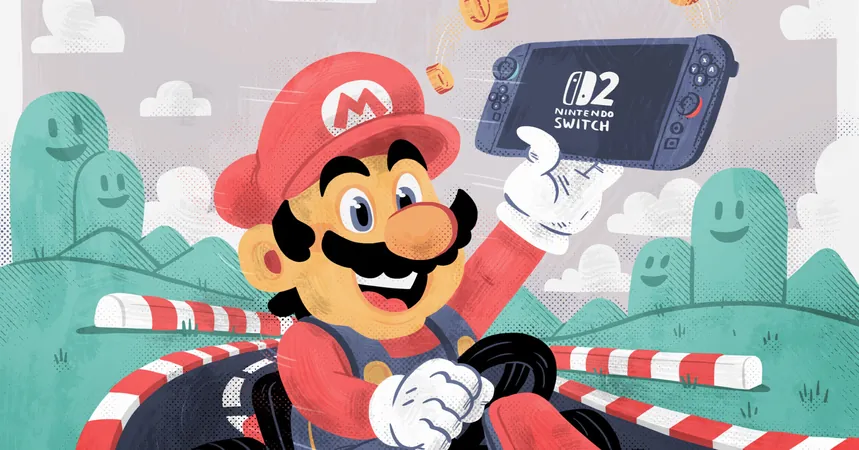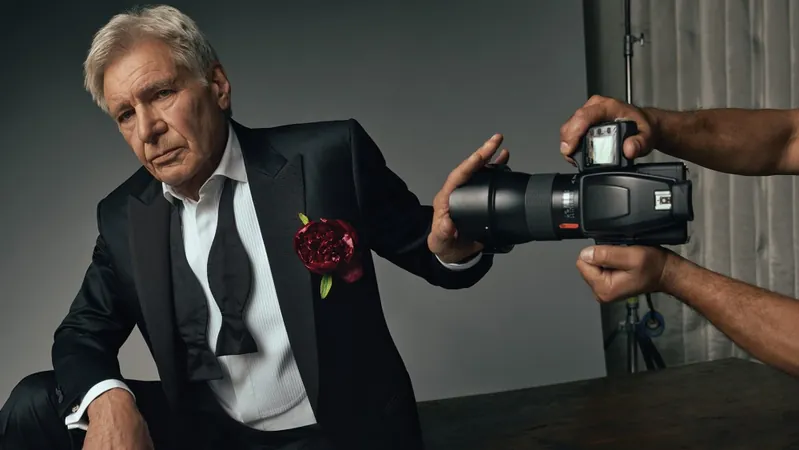
Nintendo’s Switch 2: How the Gaming Giant Turned the Tide on Doubts
2025-07-18
Author: Ken Lee
Nintendo's Switch was a groundbreaking success, but its successor, the Switch 2, is facing some skepticism. Can the familiar formula still captivate a demanding audience?
Launched recently at $450, the Switch 2 is significantly pricier compared to the original's $300 debut. This price increase applies not just to the console itself but also to many game titles, with some climbing to $80. While the Switch 2 boasts enhanced graphics and performance, many gamers are wondering if it justifies the price hike.
Initially, critics expressed concerns about the console's design and its commercial potential. Would Nintendo's conservative approach backfire, reminiscent of the Wii U's fate? It seemed the gaming giant had played it too safe, with no compelling reason for an immediate upgrade.
However, in a surprising twist, the Switch 2 shattered records to become the fastest-selling console ever, reaching a staggering 3.5 million unit sales in just four days. Nintendo's strategy might have been conservative, but it proved incredibly effective.
What factors contributed to this unexpected success? First, skeptics underestimated Nintendo's drive to dominate the gaming console market. The pandemic previously disrupted supply chains, significantly impacting the launch of new consoles. Unlike competing brands whose launches were plagued by shortages, Nintendo learned from the past and ensured that the Switch 2 was widely available.
Critics also failed to grasp the enduring allure of Nintendo's iconic titles. Sure, the marketing for the Switch 2 appeared sparse, focusing mainly on its portability and the availability of beloved games. Yet, classics like Super Mario and The Legend of Zelda hold immense nostalgic value, ensuring that gamers feel compelled to invest in the new console.
On the flip side, those doubting the Switch 2 overestimated its competition. With neither Sony nor Microsoft capitalizing on any perceived customer dissatisfaction, the gaming landscape remained relatively unchanged. Supply constraints have forced both companies to lean on older consoles much longer than anticipated. Meanwhile, the PlayStation 5 and Xbox Series X|S have struggled to produce next-gen exclusive titles.
While Valve’s Steam Deck offers a robust alternative with its customizable experience and extensive library, it remains more niche compared to the Switch's family-friendly user base. For many casual gamers, a smooth, user-friendly experience takes precedence over a complex gaming system.
Ultimately, the Switch 2 has achieved success within its own right—offering a product that neatly sidesteps existing competition, despite the skeptics. While the launch didn’t draw the same buzz as the original Switch, it solidified Nintendo's position at the forefront of gaming.
As we venture further away from the launch, it's crucial to remain watchful; while the initial sales figures are promising, history reminds us that sustained relevance can be a tricky affair. Will Nintendo continue to innovate, or has it grown complacent since it last entered the spotlight?




 Brasil (PT)
Brasil (PT)
 Canada (EN)
Canada (EN)
 Chile (ES)
Chile (ES)
 Česko (CS)
Česko (CS)
 대한민국 (KO)
대한민국 (KO)
 España (ES)
España (ES)
 France (FR)
France (FR)
 Hong Kong (EN)
Hong Kong (EN)
 Italia (IT)
Italia (IT)
 日本 (JA)
日本 (JA)
 Magyarország (HU)
Magyarország (HU)
 Norge (NO)
Norge (NO)
 Polska (PL)
Polska (PL)
 Schweiz (DE)
Schweiz (DE)
 Singapore (EN)
Singapore (EN)
 Sverige (SV)
Sverige (SV)
 Suomi (FI)
Suomi (FI)
 Türkiye (TR)
Türkiye (TR)
 الإمارات العربية المتحدة (AR)
الإمارات العربية المتحدة (AR)